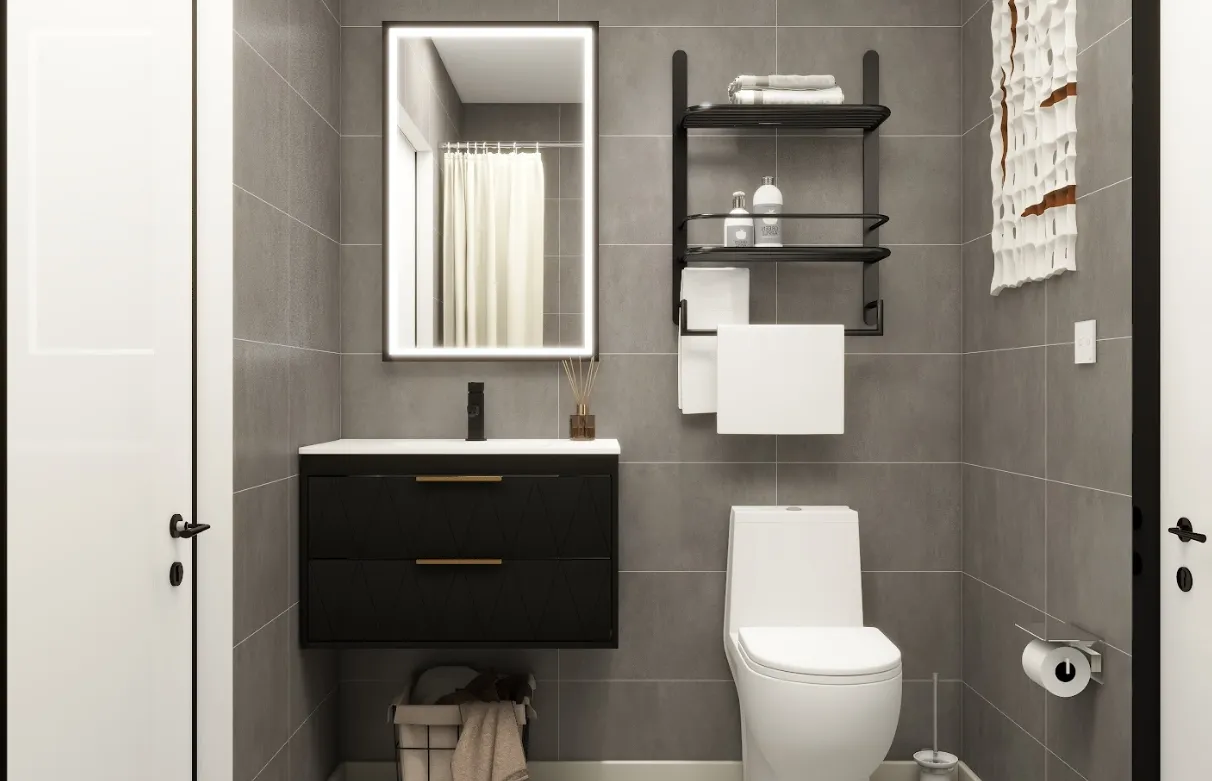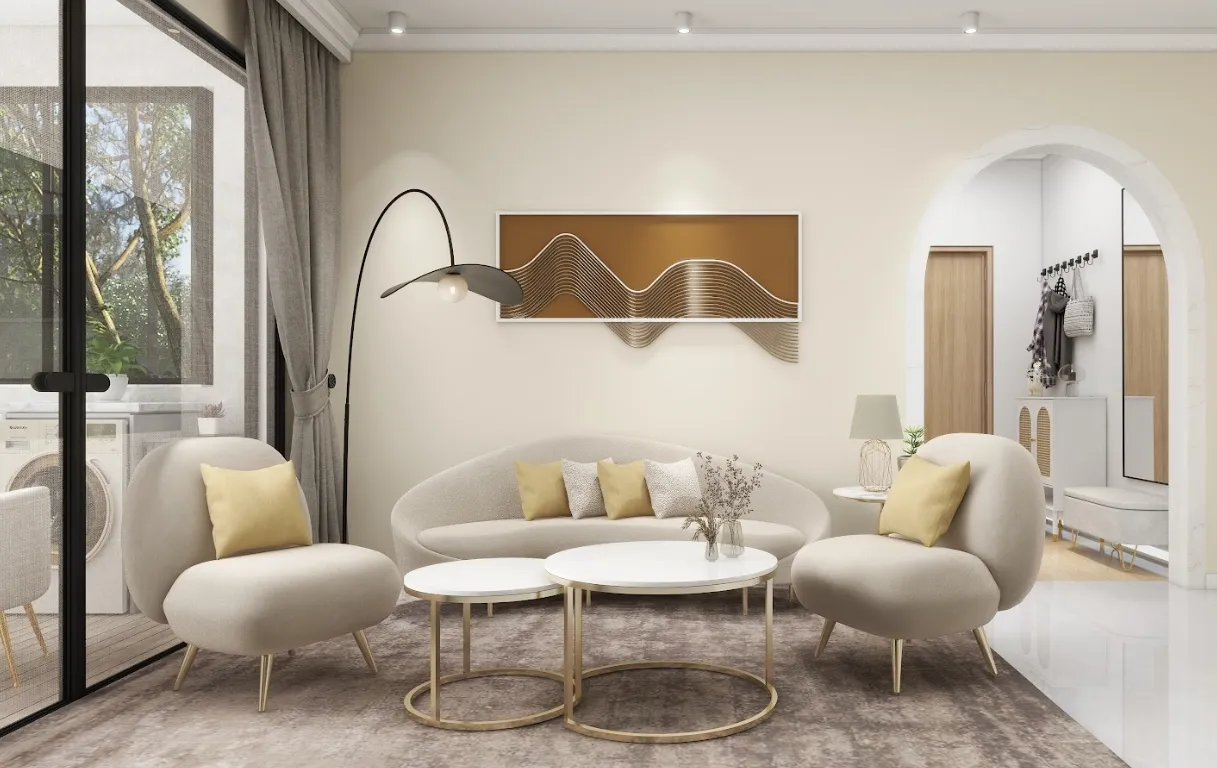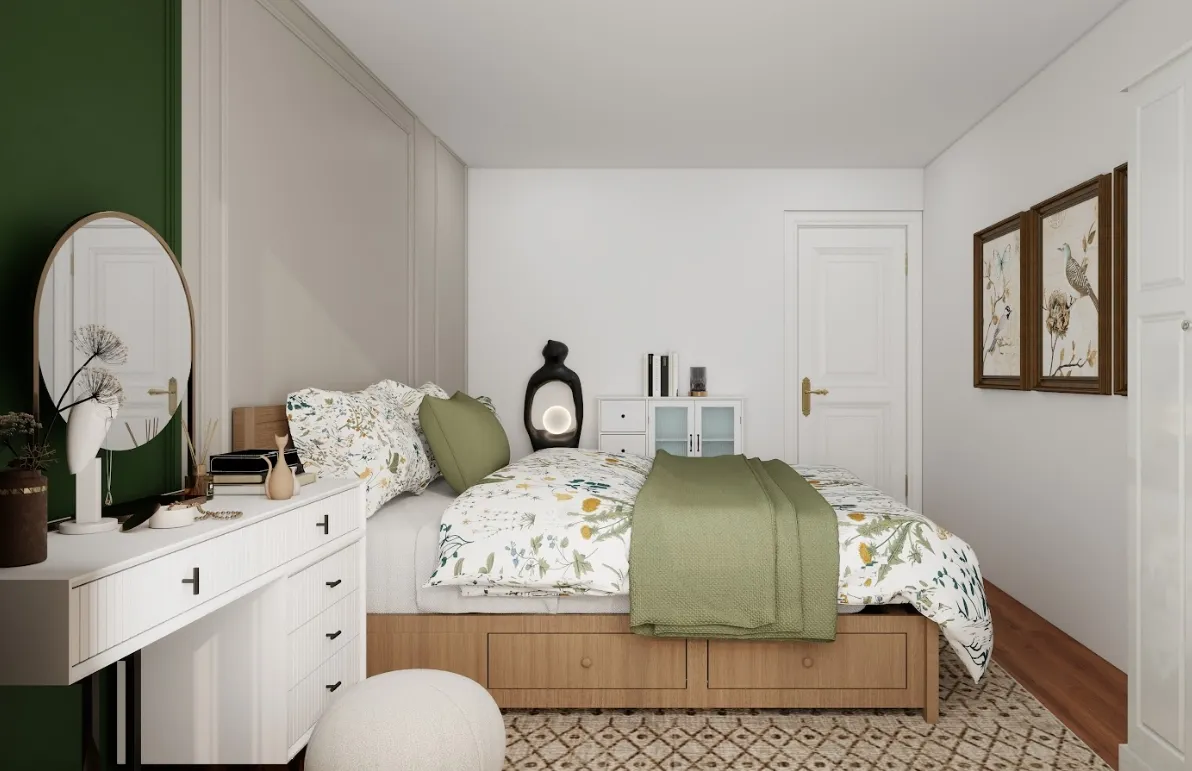2025 Creative Design of All-round Tile Edge Trim Ideas for Homes
In home decoration, tile edge trim is not only a decorative element, but also a key detail to enhance the beauty and functionality of the space. The appropriate tile edge trim design can add an artistic and layered feel to the space, while coordinating with the overall style and becoming a visual highlight. Whether it is a geometric pattern, natural elements or carpet effect, tile edge trim can inject a unique personality and artistic atmosphere into the space.
The following article will provide some suitable tile edge trim ideas for each partition of the home.
Living Room

Geometric Pattern.Tile trim edging with geometric patterns can add a sense of modernity and art to the space, such as stripes, plaids, circles, triangles, etc., which can add a sense of hierarchy and visual impact to the space.
Carpet Effect. By splicing tiles to create a carpet-like pattern, you can add a sense of hierarchy and artistic atmosphere to the space. This design is not only beautiful, but also more durable and easier to clean than traditional carpets..
Natural Elements. Choose tile edging trim with natural element patterns, such as leaves, flowers or marine life, to create a natural and fresh atmosphere.
Tile Painting. Use tiles to create artistic paintings on the wall to show a personalized living room decorative style. Tile paintings are more textured than traditional hanging paintings and can reflect the owner's taste and creativity.
Bathroom

Anti-slip shower tile edge trim. The humidity in the bathroom is high, and anti-slip is the key. Therefore, shower tile edge trim chooses tile edging trim with anti-slip function, such as tile edging trim with texture or concave and convex design, which can increase safety.
Natural elements. Choose tile trim edges with natural element patterns, such as leaves, flowers, or marine life, to create a fresh and natural atmosphere.
Geometric patterns. Tile edging trim with geometric patterns can add a modern and artistic feel to the space, such as stripes, plaids, circles, triangles, etc., which can add a sense of layering and visual impact to the space.
Tile borders. Use tile trim edges around door frames or niches to add a sense of layering and decorativeness to the bathroom design space.
Kitchen

Geometric patterns. Tile edging trim with geometric patterns can add a modern and artistic feel to the kitchen design space, such as stripes, plaids, circles, triangles, etc., which can add a sense of layering and visual impact to the space.
Tile paintings. Use tiles on the wall to create artistic paintings to show a personalized decorative style. Tile paintings are more textured than traditional hanging paintings and can reflect the owner's taste and creativity.
Natural elements. Choose tile trim edging with natural element patterns, such as leaves, flowers, or marine life, to create a natural and fresh atmosphere.
Tile borders.Use tile borders around door frames or niches to add a sense of layering and decorativeness to the space.
Dining room

Carpet effect. By splicing tiles to create carpet-like patterns, you can add a sense of hierarchy and artistic atmosphere to the space. This dining room design is not only beautiful, but also more durable and easier to clean than traditional carpets.
Geometric patterns.Tile edging trim with geometric patterns can add a sense of modernity and art to the space, such as stripes, plaids, circles, triangles, etc., which can add a sense of hierarchy and visual impact to the space.
Natural elements. Choose tile edging trim with natural element patterns, such as leaves, flowers or marine life, to create a natural and fresh atmosphere.
Tile paintings. Use tiles on the wall to create ceramic tile edging trim art paintings to show a personalized decorative style. Tile paintings are more textured than traditional hanging paintings and can reflect the owner's taste and creativity.
Study Room
Natural elements. Choose tile trim edging with natural element patterns, such as leaves, flowers or marine life, to create a natural and fresh atmosphere.
Geometric patterns.Tile edging trim with geometric patterns can add a sense of modernity and art to the space, such as stripes, plaids, circles, triangles, etc., which can add a sense of hierarchy and visual impact to the space.
Tile borders. Use tile edging trim around door frames or niches to add a sense of hierarchy and decorativeness to the space.
Carpet effect.Splicing a carpet-like pattern through ceramic tiles can add a sense of hierarchy and artistic atmosphere to the space. This study room design is not only beautiful, but also more durable and easier to clean than traditional carpets.
Bedroom

Carpet effect. Splicing a carpet-like pattern through ceramic tile edging trim can add a sense of hierarchy and artistic atmosphere to the space. This bedroom design is not only beautiful, but also more durable and easier to clean than traditional carpets.
Natural elements. Choose tile edging trim with natural element patterns, such as leaves, flowers or marine life, to create a natural and fresh atmosphere.
Geometric patterns.Tile edging trim with geometric patterns can add a sense of modernity and art to the space, such as stripes, plaids, circles, triangles, etc., which can add a sense of hierarchy and visual impact to the space.
Tile border. Use tile edging trim around door frames or niches to add layering and decorativeness to the space.
Entryway and Corridor

Geometric patterns. Tile edging trim with geometric patterns can add a modern and artistic feel to the space, such as stripes, plaids, circles, triangles, etc., which can add layering and visual impact to the space.
Carpet effect.Splicing carpet-like patterns through ceramic tile edging trim can add layering and artistic atmosphere to the space. This entryway design is not only beautiful, but also more durable and easier to clean than traditional carpets.
Tile border. Use tile borders around door frames or niches to add layering and decorativeness to the space.
Natural elements. Choose tile edging trim with patterns of natural elements, such as leaves, flowers or marine life, to create a natural and fresh atmosphere.
When To Use Tile Edge Trim
Tile trim is often used to trim, transition or decorate the edges of tile laying, which can enhance the overall aesthetics and protect the edges of tiles. When wall tiles are laid to the border, opening or corner, in order to avoid rough edges or easy cracking, trim should be used for edge treatment. In the kitchen and bathroom space, trim can also be used as a visual divider to add a sense of layering. Especially in modern home design, trim is also an important part of creating detailed beauty.
How To Cut Tile Edge Trim
When cutting tile trim, you need to use appropriate tools such as a manual push knife, electric wet cutter or angle grinder, depending on the material of the trim. First accurately measure the size and draw the cutting line with a marker, then place the trim firmly and cut evenly along the marked line. If using a wet cutter, keep the water running to cool it to prevent the tile from breaking. After cutting, you can use sandpaper or edge grinder to trim the edge to make it smoother and easier to install later. Remember to wear protective equipment to ensure safe operation.
Summary
Through clever tile edge trim design, you can not only enhance the beauty and functionality of your home space, but also inject unique personality and artistic atmosphere into the space, adding more comfort and fun to family life. Through the tile trim edge ideas provided in this article for each partition of the home, I hope you will be inspired to find a tile edge trim that satisfies you.
On the EClife home improvement platform, there are not only a variety of tile trim edge ideas to share with you, but also more design plans for every corner of the home, such as bedrooms, bathrooms, kitchens, and a variety of design styles such as romantic French, Japanese, and modern Chinese for you to choose from.
Tile Edge Trim FAQs
1.Can you put tile edge trim after tiling?
It is possible to install tile edge trim after tiling. While in most cases the edge trim is installed with the tile, there are certain profiles designed for retrofitting existing tile assemblies.
2.How do you finish off tile edges?
Instead of using Schluter the cleanest and easiest way is to simply polish the edge of the tile and have the face color matched at Home Depot. Dab the paint on the edges allowing it to level off and it will look like the tile is simply finished on the edge. Caulk to the wall and you're done.
3.Which tile edge trim to use?
Installing a metal tile edge trim is the most common, but you can also use PVC trims, or bullnose tiles for a more traditional aesthetic. If you choose stone tiles, you also have the option of polishing the edges, as long as you have the right equipment.
4.Do you grout between tile and edge trim?
After the adhesive has set, apply grout to the gaps between the tiles and the trim. Use a grout float to spread the grout evenly and a sponge to clean off any excess. Recommended Grout: Tile Grout.






_1753683059938.webp)

